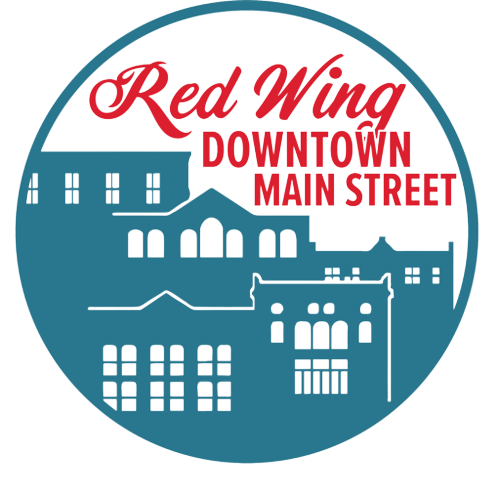Chicago, Milwaukee & St. Paul Railroad Depot
Built: 1905
National Register of Historic Places: 1980
Architectural Style: Neoclassical Revival
Architect/Builder: J.N. Nettenstrom
Currently: Red Wing Arts Gallery
The depot was built in 1905, and designed by one the Chicago, Milwaukee, and St. Paul company’s architects, J.M. Nettenstrom. Nettenstrom’s work appears across the midwest, and is in the Neoclassical Revival style, a popular architectural movement of the late 19th and early 20th centuries. The clearest examples of Neoclassical influence are the columns along the entryway, with the triangular porte cochere above. The symmetrical layout, with the primary door at the center, is also a trademark of that era.
The design of the depot, and adjacent Levee Park, were part of the much larger City Beautiful movement that swept across the country at the end of the 19th Century. The City Beautiful movement was popularized at the Chicago World's Fair in 1893 when architect Daniel Burham unveiled his “White City,” full of grand buildings. Burnham and likeminded architects believed that the construction of beautiful public facilities would in turn make cities safer, cleaner, and more livable for all residents. While the movement had largely unsatisfying results in terms of reducing crime and poverty, it did produce attractive buildings.
Red Wing’s depot managed to be both appealing and practical. For the half-century following the depot’s construction, the railroad was still the most popular means of long-distance travel in the United States. As a result, Red Wing saw eight trains stop each day. Many famous visitors would have stopped through Red Wing on these routes, including President Harry Truman, who made it one of the 352 stops on his 1948 “Whistle Stop Tour.”
The scene at President Truman’s tour stop
Amtrak was established in 1971, centralizing the country’s passenger train travel, and limiting Red Wing’s depot to the Empire Builder train line which runs from Chicago to Seattle and Portland. 2024 brought the excitement of the new Borealis line, so Red Wing now sees four passenger train stops a day between the larger hubs of St. Paul and Chicago.
The travelers that come through now are able to visit the Red Wing Depot in something close to its original form thanks to work by the Red Wing Area Fund. Inside, riders can visit Red Wing Arts, which hosts a gallery and gift shop featuring works by local artists.







